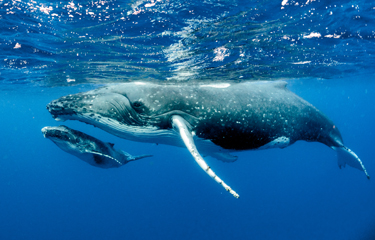NOAA Fisheries designates habitat areas in Pacific for humpbacks

NOAA Fisheries has issued a final rule that designates three critical habitat areas for humpback whales in U.S. waters in the Pacific Ocean.
According to the document, published in the Federal Register, two of the three distinct population segments of humpbacks are considered endangered based on the Endangered Species Act, while a third segment is deemed threatened.
On Wednesday, 21 April, the agency designated more than 59,000 nautical square miles of habitat area in the North Pacific Ocean for the Western North Pacific humpback whale segment, an endangered population. That area includes parts of the eastern Bering Sea and the Gulf of Alaska. The other endangered humpback segment, the Central America population, have been designated 48,000 nautical square miles off the coasts of California, Oregon, and Washington. The threatened Mexico humpback segment received a habitat area of more than 116,000 nautical square miles in the North Pacific Ocean, including part of the eastern Bearing Sea, Gulf of Alaska, and California current ecosystem. The designations include areas where the segments habitat overlap.
In determining the habitat areas, NOAA Fisheries received several comments raising concerns about commercial fishing operations, with many calling for exclusions in southeast Alaska to protect the small coastal communities there that rely on fishing.
However, the agency noted herring – the primary prey species for humpbacks – are managed at the state level and not by federal agencies.
“Thus, the critical habitat designation is not expected to change the viability or management of development projects of small Alaskan communities or commercial fishing activities,” NOAA Fisheries said.
The rule will take effect on Friday, 21 May.
The designations came about because of a lawsuit won in 2018 by the Center for Biological Diversity, Wishtoyo Foundation, and Turtle Island Restoration Network.
In a statement, the plaintiffs in the case said the designations will give the humpbacks greater protection. They said species with protected habitats are twice as likely to recover. But the activists said more still need to be done.
“Pacific humpbacks finally got the habitat protections they’ve needed for so long,” said Catherine Kilduff, a lawyer with the Center for Biological Diversity, in a statement. “Now we need to better protect humpbacks from ship strikes and entanglement in fishing gear, their leading causes of death. To recover West Coast populations of these playful, majestic whales, we need mandatory ship speed limits and conversion of California’s deadly trap fisheries to ropeless gear.”
Photo courtesy of Imagine Earth Photography/Shutterstock






Share